June 1, 2013
Having reviewed the tales told by many of the most prominent of the victims and responders, I was going to reboot this series and start over from the beginning with the assistance of a set of photos that I previously did not have access to, but I have accumulated a lot of clutter that I need to clear out first.
Let’s begin, for no particular reason, with a radio interview with Jeff Bauman that was aired on April 26, just eleven days after the marathon. At that time, Bauman had already been released from the hospital after a near miraculous recovery. To say that his demeanor was amazingly upbeat for a guy who had just lost both his legs a mere week-and-a-half earlier would be something of an understatement. At the tail end of the interview, one of the two hosts actually has to prompt him to show some kind of real emotion, which he still fails to do.
The exchange goes something like this: “Jeff, I’m going to try – this is not meant to be an insensitive question, but I’m, but I’m listening to your voice and you don’t sound angry, you don’t sound pissed off. Can I ask you what your feelings are toward the men who did this to you and so many other people?” To which Bauman responds, rather unconvincingly, “Yeah, well, I’m – I’m pissed, obviously, but, I mean …,” after which he mumbles something about looking to the future rather than at the past.
But that’s not my favorite part of the interview. No, my favorite part is when he tells the show’s hosts that his “hearing is shot … I can’t hear anything.” That would be an injury that would be expected for someone who had been in the midst of a bombing, of course, but what makes it a rather bizarre claim is that he says it while participating in a telephone interview during which he consistently responds to the hosts’ questions without hesitation or confusion.
Curiously, an interview that Dr. Panter did with the repugnant Bill O’Reilly ended the very same way – with the doctor prompted to talk about how “pissed off” he must be. Even more curiously, O’Reilly introduced him as “an emergency room physician who works in South Carolina.” Another report described Panter as “a Florida emergency room physician.” This guy must be the busiest ER doc in the entire country, apparently dividing his time between facilities in at least four different states.
Anyway, in the O’Reilly interview, Panter tells yet another version of his tall tale, which goes a little something like this: “We pulled a gentleman out from under [Campbell], and then we began working on her too. Uhh, she was basically in arrest at the time. We thought we had a faint pulse. We started CPR, uhh, because we weren’t sure of the pulse or not.” Panter later identifies that “gentleman” as Jeff Bauman, apparently forgetting that he had told another interviewer that he had pulled Campbell out from under Bauman.
Panter also repeats a claim that he made in other interviews: that he made it through the blast without injury only because the people between him and the bomb, who were all mowed down, served as a human shield: “The people next to me went down … The people to my left absorbed the impact and I basically – they went down and I stood there unscathed.” We’ve actually already reviewed a photo of the good doctor in the position he was in when the blast occurred, but let’s take another look to see if Dr. Panter is accurately describing the situation. Panter is the guy in the yellow shirt with the black jacket tied over his shoulders. The people behind him, who were to his left when he was facing the street, don’t really look like they “absorbed the impact.”
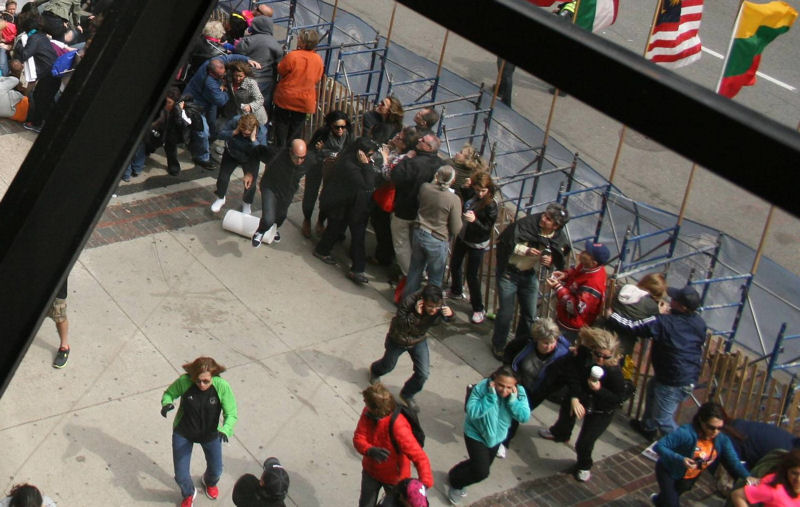
With that out of the way, let’s take another look at The Other Jeff as he is wheeled off the scene. You would have thought that someone would have done him a solid and flipped down the foot rest for him to rest his bad leg on so that his toes weren’t practically dragging on the ground, wouldn’t you? He doesn’t really look very happy, but the two responders with him seem to be taking a pretty lighthearted approach to the carnage. That’s a pretty clean bandage, by the way, on the guy behind them.
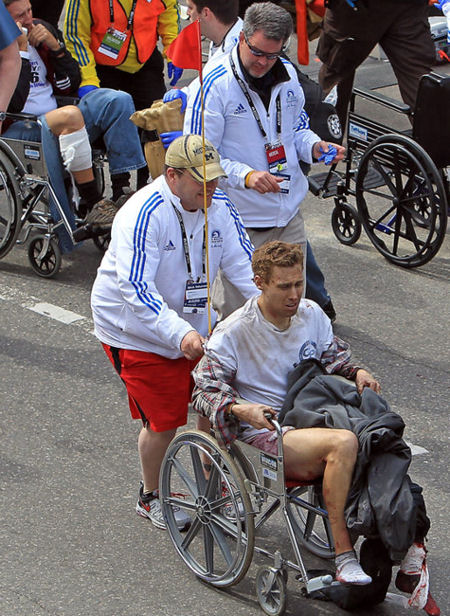
Let’s now turn our attention to what I like to call the ‘indestructible temporary sign.’ As can be seen in the first image, the sign was affixed to a pole that was in the immediate vicinity of all the victims we have come to know and love, like Krystle, Jeff, Hoody, Mery and Nicole – all of whom, as we know, received very serious, life-threatening injuries. As the second image makes clear, the paper/cardboard/foamboard sign was very firmly attached to the pole with twine. And as the third image reveals, that amazing sign survived the blast without so much as a scratch on it – no rips, tears, punctures, or singeing whatsoever. Nothing strange about that, I suppose. The sign was, after all, above crotch level. But there was that singeing of Campbell’s head that we learned about in the last post …
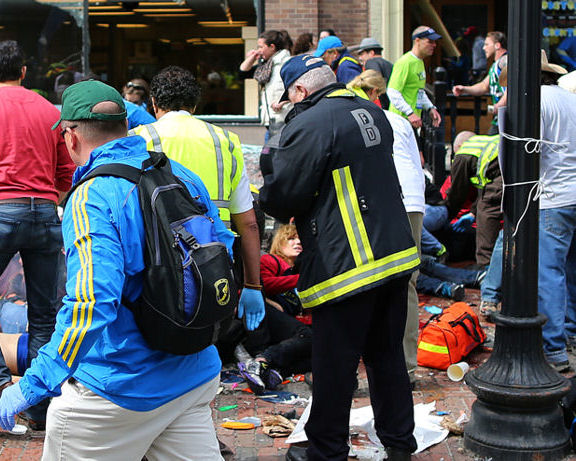
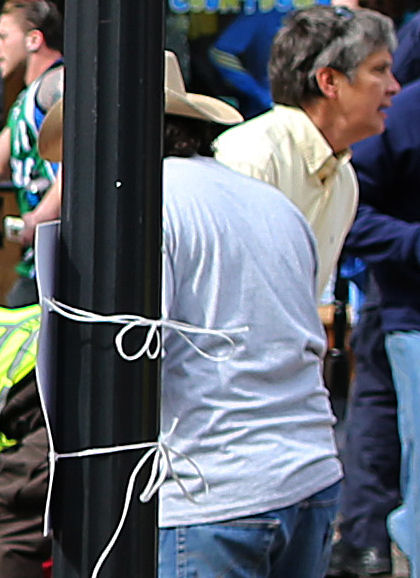
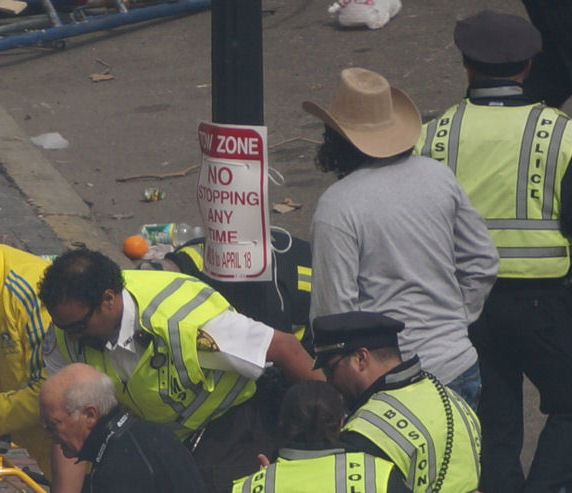
Did you notice, by the way, that in all three of those images, Carlos can be seen heroically assisting victims? Moving on, we find that the onlookers in the image above weren’t the only ones on the scene to direct their attention to the upper floors of the Lenscrafters building. In the images below, we can see that a group of cops seemed to take a keen interest in that area as well. So too did Dr. Spielberg and a guy in a blue shirt and sunglasses. And Carlos seemed to think that something might have happened up there as well (as do possibly the cops in the background, though it is difficult to tell given that they are obscured by the tree).

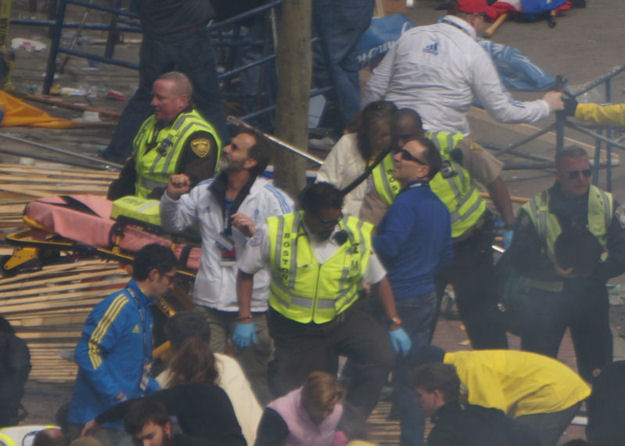
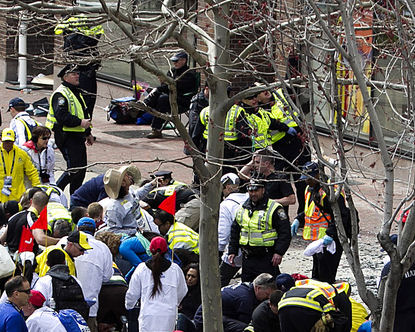
Next up is another iconic “victim in a wheelchair” shot that I’m sure you’ve all seen before. At the risk of sounding like a contrarian, I really have to ask: do those leg injuries look real? Take a closer look in the second image. What the hell is that supposed to be? A cut? A gash? A burn? Is that the kind of wound that shrapnel would cause? A long, clean cut extending vertically down the length of the lower leg? And why were the front of her legs injured when the official story holds that the victims were lined up at the fence watching the race when the bomb went off behind them?
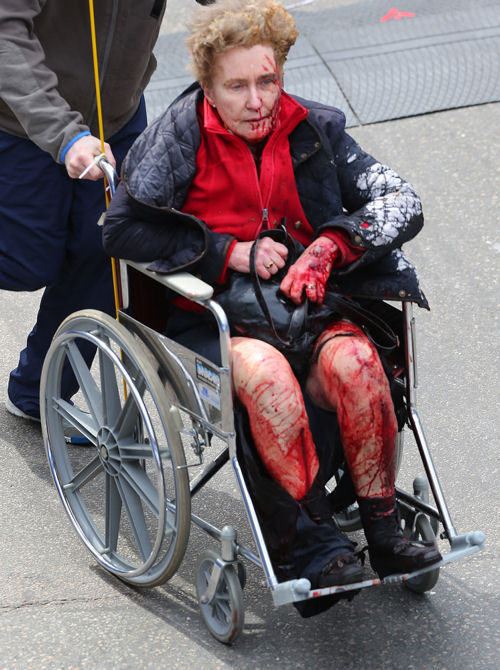

Speaking of leg injuries, we saw in the last post that there were a number of reports of disembodied legs littering the scene – legs flying past people’s heads, legs strewn on the ground, legs being carted off to the medical tent. But this wasn’t an attack by a gang of machete-wielding terrorists who maniacally hacked off innocent spectators’ legs. And shrapnel, as far as I know, doesn’t generally cleanly sever limbs, a fact that was supposed to be illustrated by the alleged injuries suffered by Jeff. So even if there had been a number of people who had suffered explosively amputated limbs, the notion that the scene would have been littered with more-or-less intact legs is fundamentally absurd. What it would have been littered with, as I noted previously, is meat, bone shards, and lots and lots of blood.
By the way, has anyone heard about the fisherman in Belarus who was killed recently by a beaver? It was the weirdest thing – the dude got bit on the leg by a crazed beaver and bled to death despite efforts by friends to save him, including the application of an improvised tourniquet: “His friends desperately tried to staunch the blood welling up from the wound but the animal’s bite had severed a major artery and his life could not be saved.” You can see his wound in the morgue shot below. The guy obviously wasn’t ‘Boston Strong.’ He only severed one major artery while dozens of people in Boston had their entire leg blown off and didn’t even have friends standing by to immediately offer assistance, yet they all live on while this wimpy guy died.

Let’s just hope that in future attacks, the ‘terrorists’ stick with bombs rather than unleashing a horde of angry beavers. Unlike bombs, which hardly kill anyone, those things are dangerous! In other news, there are, as it turns out, some images of the second bombsite in the public domain, though not very many. One of the two below is partially blurred, though I have no idea why since the scene is considerably less bloody than the first site. There are a handful of additional images of the site at each of the links below. There really wasn’t much to see there though, with virtually no property damage and not many apparent victims on display. And yet that is where two of the three alleged deaths were supposed to have occurred.
http://www.flickr.com/photos/kenshinokubo/sets/72157633255956194
http://www.flickr.com/photos/brianjdamico/sets/72157633259135348
Actually, that may or may not be true. It is all but impossible to determine where Lingzi Lu supposedly died because there are no detailed media reports to be found. We don’t know which site she was supposed to be at, where at that site she was supposed to have been standing, or whether she died where she fell or in the medical tent or at one of the area hospitals. We also don’t know what injuries she sustained that caused her alleged death. And there don’t appear to be any photos of her either sprawled out on the scene or being transported away from the scene. So we’re just supposed to take it on faith that she died somewhere and in some manner as a result of the explosions at the Boston Marathon.
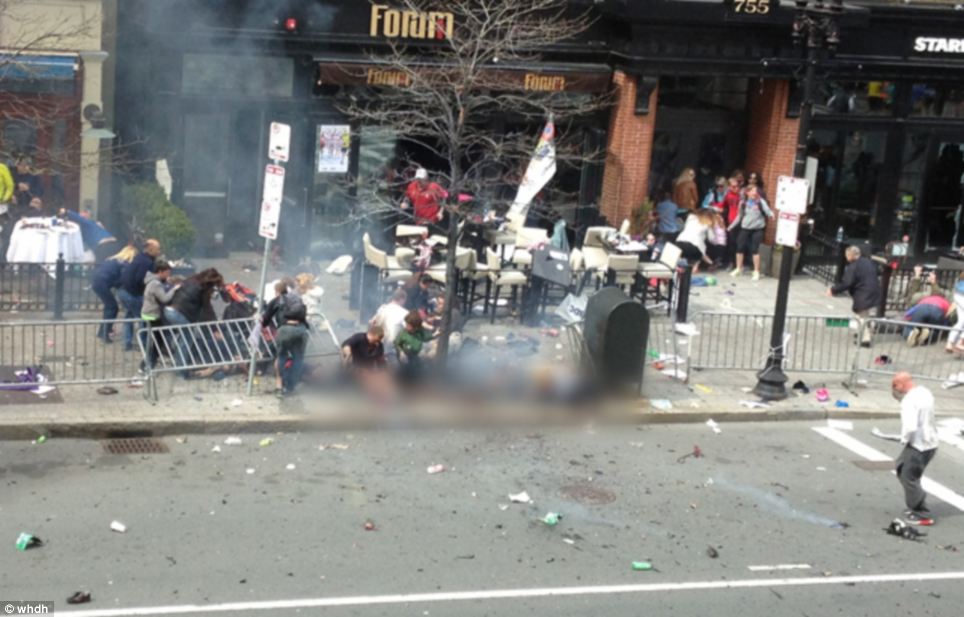
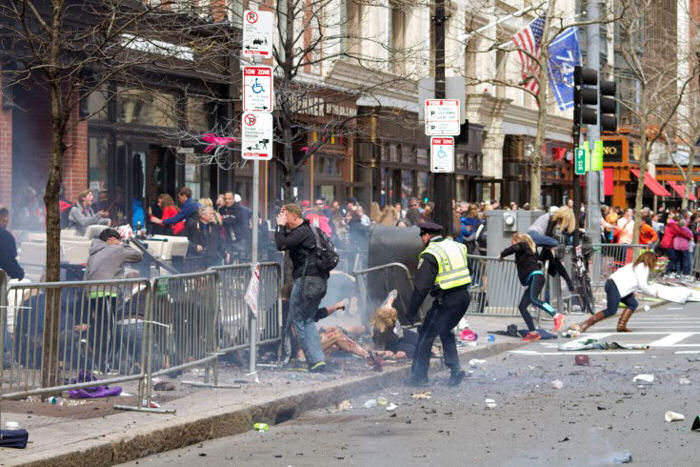
It is though officially the site where eight-year-old Martin Richard supposedly died and where other members of the Richard family suffered grave injuries, and where numerous people lost limbs. But there is little in the available images that lends support to such claims. If we are being very generous, there were maybe two-dozen victims at the first site and there were obviously even fewer at the second site. So even if we give the government and media every benefit of the doubt and accept that all the victims in the photos suffered real injuries, we are still woefully short of accounting for the official victim tally, which continues to rise and now stands at 282.
We seem to be roughly 250 bodies short. Boston.com has kept a running tally of the known victims which they initially pledged to “continue to update,” but more than six weeks later they have only been able to come up with about 50 named victims, and the details on many of them are quite sketchy. Don’t Boston hospitals and the police and FBI keep records of such things? How hard should it be for a local reporter to call around and verify the official tally? Why are we only honoring 50 victims while ignoring the other 232?
Of course, in the aftermath of the explosions, Boston hospitals were off-limits to pretty much everyone, with heavily armed SWAT teams menacingly guarding the entrances. There were – wouldn’t you know it? – very convenient bomb threats supposedly called in, which necessitated the heavy police presence. As one report held, “Among the uncertainty, a SWAT team stood guard here at the entrance to Brigham and Women’s Hospital – family and visitors asked to leave, only the injured allowed.”
***************************************************************
I’m not entirely sure what to make of the information that is to follow, but it is a part of this story so I feel an obligation to report it. The facts are beyond dispute, but determining their meaning is another matter altogether.
Let’s begin on February 2, 2013. That was the day that Chris Kyle, former Navy SEAL and author of American Sniper, was shot and killed on a Texas shooting range by a US Marine veteran. Kyle was widely hailed as a hero by both the mainstream and alternative media, but this scribe didn’t shed too many tears. Kyle was credited with 160 confirmed kills and claimed nearly 100 more. He was, simply put, a hit man for Uncle Sam. By any reasonable definition of the term, he was a serial killer – and a very prolific one at that, putting rivals like Jeffrey Dahmer and Richard Ramirez to shame.
He followed that up by founding and running Craft International, an entity devoted to providing paramilitary training to government and corporate clients. It is companies like his that we have to thank in part for the wholesale militarization of the nation’s police forces. How any of that qualified him as a hero is anyone’s guess. But though I tend to think that he got exactly what he deserved (live by the sword and all …), it still must be stated that the circumstances of his death were a bit odd.
Two-and-a-half months after Kyle’s death, at least six guys appearing to be Craft International personnel showed up at the Boston Marathon. It is impossible to say whether they were in fact operatives from Craft, but their apparel makes it appear that they are. Of course, it doesn’t really seem to make sense that they would be flying their colors, so to speak, but it also doesn’t really make sense that six guys would show up attired as if they were Craft people when they actually weren’t.
It seems almost as if the powers-that-be wanted them to be seen, but also wanted there to be a certain amount of ambiguity about who they really were. No one in Washington or in the media wants to talk about them at all, yet the photos of them on the scene have been freely circulated since day one. One of those photos is reproduced below.
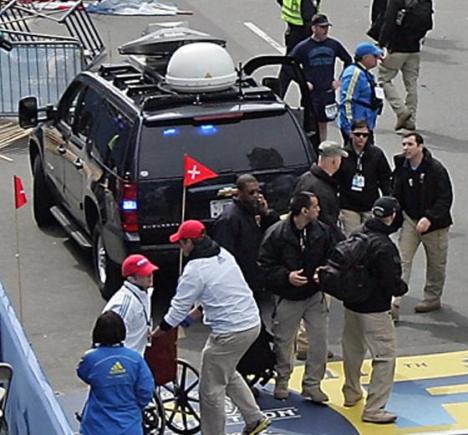
So we know that some mercenary thugs appearing to be Craft personnel were on the scene, and we also know that actor Bradley Cooper made a high-profile appearance at the bedside of Jeff “I can’t hear anything” Bauman, inserting himself into this storyline. And of course we know that another guy who was on the scene in a rather high-profile way looked, in many of the images, uncannily like director Steven Spielberg, though he was actually Dr. Levine.
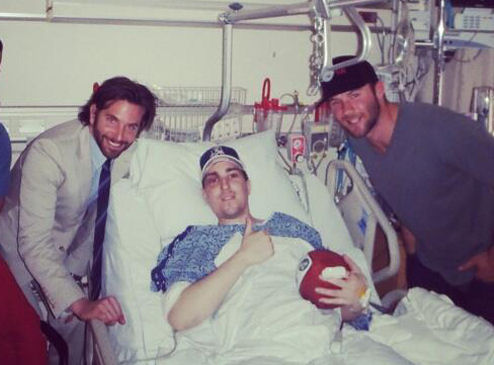
What makes all of that rather bizarre is that, just a couple weeks after the Boston Marathon incident, it was announced that Mr. Spielberg’s next film project will be directing the celluloid version of American Sniper. Producing the film and starring as Kyle will be, of course, Bradley Cooper.
Is all of that just a very strange set of coincidences? It doesn’t really seem very likely that it is. What we appear to be seeing here is a campaign aimed at erasing the line between reality and fantasy – between what is objectively real and what is make-believe. For many years now we have seen a blurring of the line between news and entertainment, as well as, through ‘reality’ television, a blurring of the line between what is ‘real’ and what is scripted. We are now entering an age when there will be no dividing line at all between news, scripted entertainment and ‘reality’ TV. It will all be one and the same.
In the new ‘reality’ we will be living in, nothing will be real and everything will be true.
